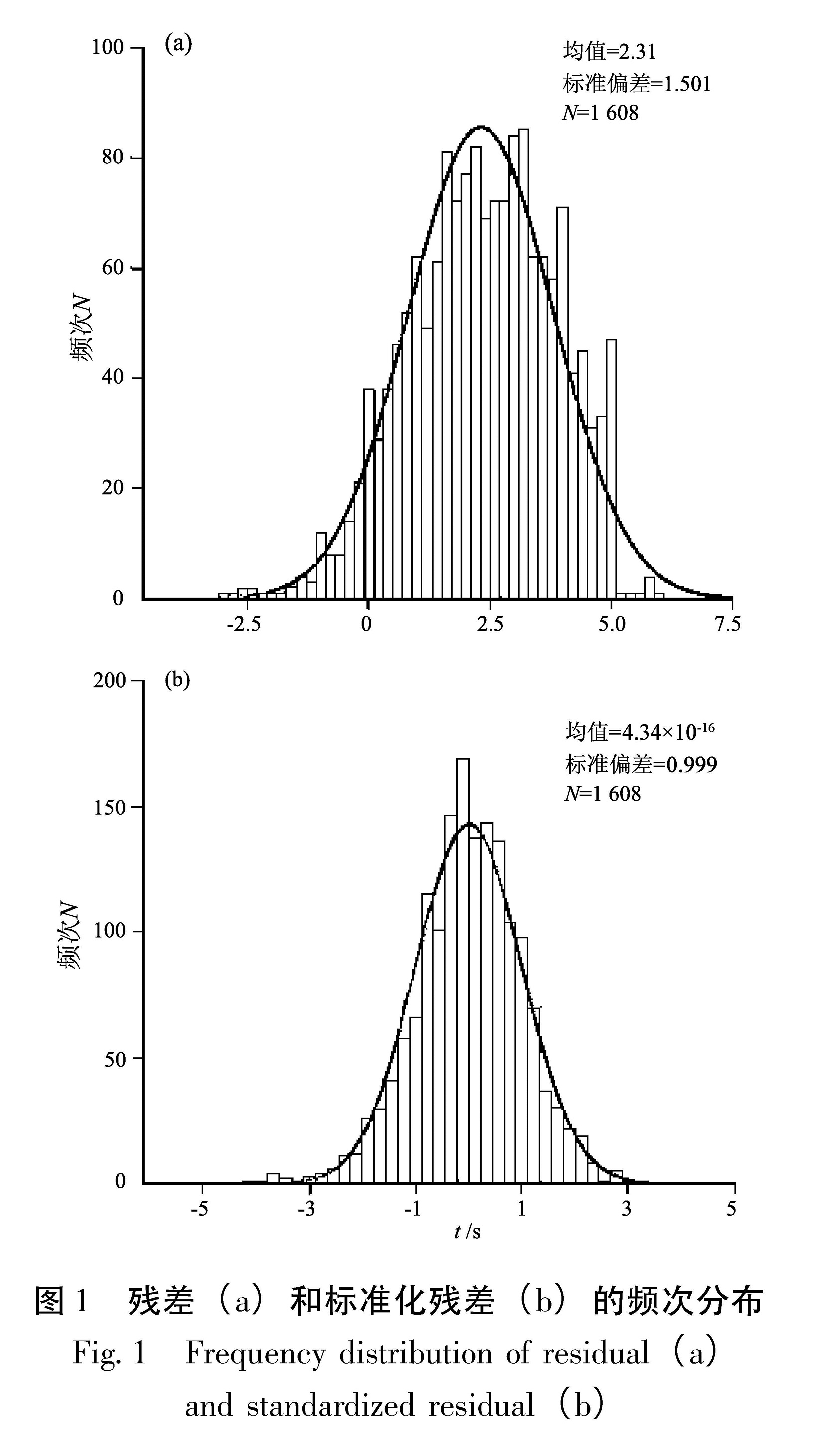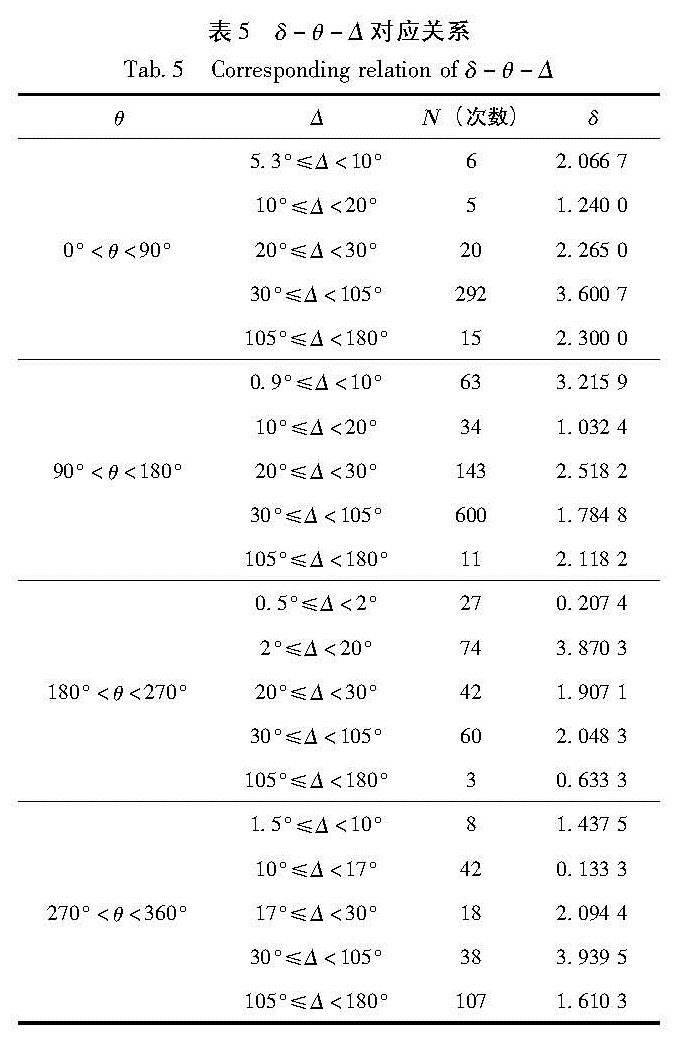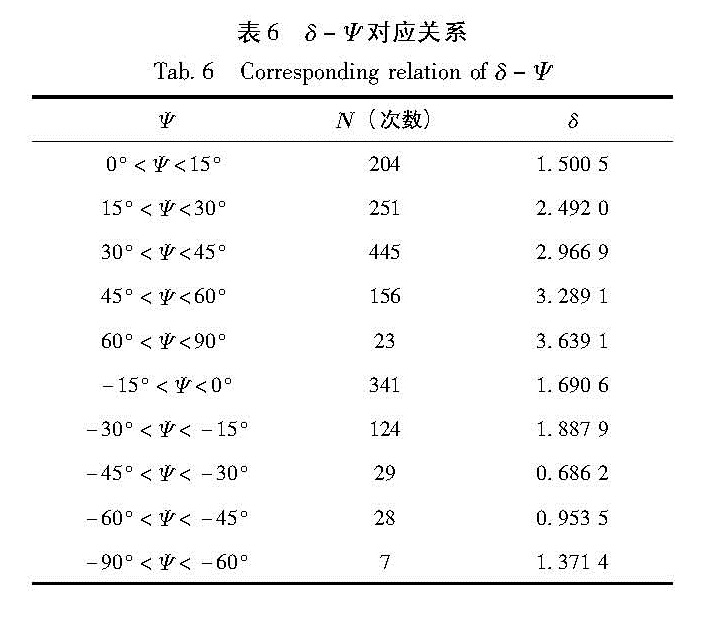基金项目:中国地震局“三结合”课题(142901)资助.
备注
通过对2001年1月至2013年12月格尔木地震台的1 608个国内外中强地震初至波到时残差(简称残差)计算,得出平均残差为2.310 6 s,比理论到时平均慢2.310 6 s。用Pearson相关分析和多元线性回归分析方法检验残差与经度、纬度、方位角、震中距、深度等参数的显著性,总结得出残差主要随方位角、震中距、纬度显著变化:(1)方位在90°<θ<180°,震中距在0.9°≤Δ<10°; 方位在180°<θ<270°,震中距在2°≤Δ<20°,残差影响较大,在青藏高原地壳和地幔内存在低速异常区,受地壳厚度和低速异常区的影响,造成波速变慢残差增大;(2)方位在0°<θ<90°和270°<θ<360°范围内,震中距同时在30°≤Δ<105°,在上、下地幔的交汇处存在低速区或低速带,受此影响,东北和西北方向的地震初至波速变慢;(3)残差在北半球随纬度增大而增大,在南半球随纬度变化不明显。
By calculating the arrival time residual(residual for short)of the first arrival wave of 1 608 earthquakes occurred at home and abroad at Golmud Seismic Station from Jan.,2001 to Dec.,2013,we obtained that the average residual error was 2.3106 s,which was slower than the theory residual error of 2.3106 s. Significant regression analysis between residual and longitude,latitude,azimuth,distance,focal depth and other parameters was also tested by using Pearson correlation analysis and multiple linear regression analysis method,and the conclusion of residual mainly changed with the azimuth,distance,latitude was showed that:(1)The azimuth and epicenter distance is in the range of 90°<θ<180° and 0.9°<Δ<10°,or 180°<θ<270° and 2°<Δ<20°,which has great influence on the residual. There exited the low velocity anomaly area in the crust and the upper mantle in the Qinghai Tibet Plateau. Influenced by the crustal thickness and low velocity anomaly zone,the wave velocity turned to slower and the residual turned to bigger.(2)The azimuth is in the range of 0°<θ<90°,270°<θ<360°,and the epicenter distance is in the range of 30°<Δ<105°,there existed the low velocity zone or low velocity zone in the interchange of upper and lower mantle,which leaded to the seismic velocity of the first arrival wave turned to slower in the direction of northeast and northwest.(3)In the northern hemisphere,the residuals changed with the latitude obviously,and increased with the increasing of latitude. However,the latitude didn't change with the latitude obviously in the southern hemisphere.







